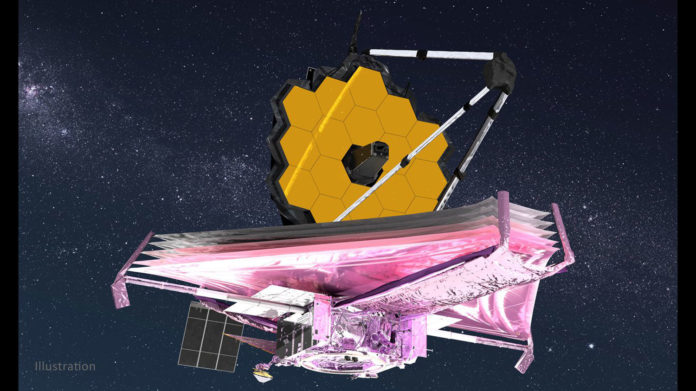The James Webb Space Telescope is the world’s largest, most powerful, and most complex space science telescope. Launched on Dec 25, 2021, the Webb will solve mysteries in our solar system.
Webb’s mirror segments are made from beryllium, both strong and light. It is engineered to withstand bombardment from the micrometeoroid strikes, an unavoidable aspect of operating any spacecraft. Between May 23 and 25, NASA‘s James Webb Space Telescope sustained an impact on one of its primary mirror segments. The telescope successfully sustained the impact and still performing at a level that exceeds all mission requirements despite a marginally detectable effect in the data.
The impact was not a result of a meteor shower and is currently considered an unavoidable chance event. As a result of this impact, a specialized team of engineers has been formed to look at ways to mitigate the effects of further micrometeoroid hits of this scale.
Analyses and measurements are carried out regularly. Impacts will continue to happen throughout Webb‘s whole tenure in space.
While building the telescope, engineers tested impacts on mirror samples to get a clearer idea of how to fortify the observatory for operation in orbit. However, the recent impact was larger than was modeled and beyond what the team could have tested on the ground.
Paul Geithner, technical deputy project manager at NASA’s Goddard Space Flight Center in Greenbelt, Maryland, said, “We always knew that Webb would have to weather the space environment, which includes harsh ultraviolet light and charged particles from the Sun, cosmic rays from exotic sources in the galaxy, and occasional strikes by micrometeoroids within our solar system. We designed and built Webb with performance margin – optical, thermal, electrical, mechanical – to ensure it can perform its ambitious science mission even after many years in space.”
Furthermore, Webb’s ability to detect and adjust mirror positions allows for partial impact correction. Engineers can cancel out a portion of the distortion by altering the position of the affected segment. This reduces the impact of any impact, albeit not all degradation may be eliminated in this manner.
Lee Feinberg, Webb optical telescope element manager at NASA Goddard, said, “With Webb’s mirrors exposed to space, we expected that occasional micrometeoroid impacts would gracefully degrade telescope performance over time. Since launch, we have had four smaller measurable micrometeoroid strikes that were consistent with expectations, and this one more recently is larger than our degradation predictions assumed. We will use this flight data to update our analysis of performance over time and also develop operational approaches to assure we maximize the imaging performance of Webb to the best extent possible for many years to come.”
